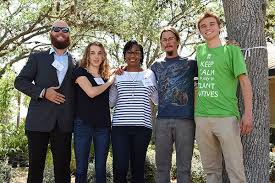Hey everyone, welcome back to the nursery. I wanted to do a quick little video today because we hear a lot of things in the nursery, a lot of questions we get asked, but there’s a couple of things that come up quite a bit, a lot of misconceptions about native plants. So, uh, let’s talk
So the first misconception we need to talk about is native plants don’t eat water. That’s not true. Uh, during this establishment period, right? When you come in and you buy a plant, you need to give it just as much water as it might be getting here in the nursery to make sure that it gets established. Uh, these things get water every day. They get watered every single day, and to make sure that these plants will adapt to the environment that you’re trying to put them in, you know, into your landscape. You want to make sure that they get just as much water as they would here until they acclimate, right? So we usually give a period of a couple of weeks to a few months depending on the size of the plant to ensure that it’s established, to make sure that when it’s left to its own devices, it’s going to adapt and be, uh, you know, as healthy as it wants to be.
The other thing that I hear a lot of is that people want no maintenance plants. They want something that they can put into a landscape and never really have to maintain. And there’s a lot of misconception around our native plants that, you know, they’re one of them, their plants blanketly that can be put into a landscape and not touched and still expected to perform. You know, whichever way that the, that the homeowner might think. That’s something that you really have to think about is understanding your plants, you know, knowing how they’re going to perform in a landscape with or without that maintenance. So the other thing that’s a little bit less of a misconception, more of just a plus of creating a native plant garden is that you don’t have to fertilize as much as, you know, using exotics. These are plants that have grown and adapted to the conditions for years and years and years.
So when you put them in a garden that’s, you know, very similar or is exactly what our Florida soil is, you know, you can cut out all of that fertilizer use that we, um, that we implement on a lot of our exotic gardens. The other thing is thinking about the kind of garden you’re trying to achieve. If you’re looking for a while, Florida natural garden, then you’re looking for something that you won’t have to maintain quite as much. You don’t want all those neat shapes. You want things to be free-flowing flowers to be blooming all over the place, but you want everything to be as it would in nature. So naturally you’re not going to have as much maintenance to do, not a lot of pruning, but if you’re looking for more of a maintain look with your Florida native plants, you will have to put in a little bit more effort.
So I think the biggest takeaway from this is that you definitely want to understand exactly what your plant wants to do, specifically in a landscape setting. You want to understand how these plants grow, what they need to establish and, and grow vigorously. You know, and that’s what we’re here to do. We’re here to inform and educate and, um, you know, explain how these plants work so that you can create a sustainable and functional native garden. So, thank you guys again for watching another one of our videos. If you liked it, go ahead and subscribe. Hit the like button, hit that bell. So the next time we upload one of these, you guys know right away and we’ll see you next time.

